Toyotomi Hidenaga was an outstanding military commander and strategist of his time, who was unjustly overshadowed by his half-brother, the great Toyotomi Hideyoshi. At different stages of his life, he was known by the names Kinoshita Koichiro, Hashiba Nagahide, and Hashiba. Despite his relative obscurity among the general public, Hidenaga was considered one of the best minds of his time, on par with the renowned Kuroda Kanbei.
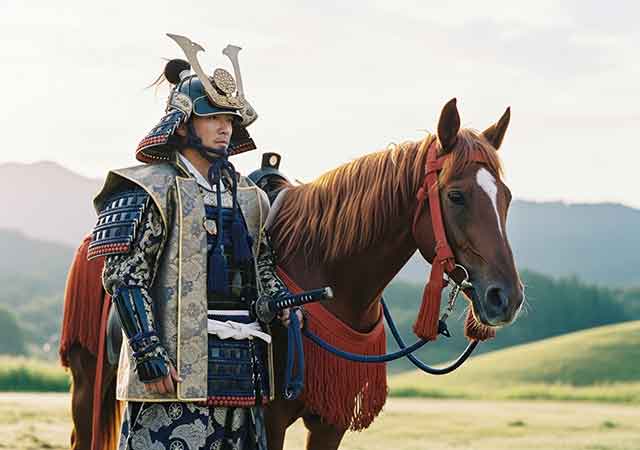
He not only developed strategic plans, but also personally led the vanguard of Hideyoshi's army in key campaigns. Holding important military and administrative posts, Hidenaga played a key role in the formation and consolidation of Toyotomi's power.
He was born in the village of Nakamura in the province of Owari. He and Hideyoshi had the same mother but different fathers. Unlike his colorful, expansive, and ambitious brother, Hidenaga was level-headed, judicious, and respected by many daimyo. He often acted as a mediator in conflicts, and even Tokugawa Ieyasu, the future shogun, valued his opinion and treated him with the same respect as Hideyoshi.
His brother included Hidenaga in his inner circle of confidants, giving him the freedom to express dissent and influence key decisions. Hidenaga was always at the forefront of battles, both during his service to Oda Nobunaga and during Hideyoshi's heyday.
In 1577, he participated in the conquest of Harima Province. A year later, he suppressed the rebellion of Bessho Nagaharu, captured Takeda Castle in Tajima, participated in the siege of Kuroi Castle and the famous siege of Miki Castle (1578–1580), where he cut off supply routes and forced the enemy to retreat. He captured Ayabe Castle in the province of Tamba, and after the surrender of the Bessho clan, he ended the campaign with a victory.
In the same year, 1580, he established control over Tajima by capturing Arikoyama Castle and became its commander. Hidenaga then played a key role in the siege of Tottori Castle.
In 1582, he participated in the “water siege” of Bitchu Takamatsu Castle. When the Honnoji Incident occurred in Kyoto and Oda Nobunaga was killed, Hideyoshi and his brother marched on the capital and defeated the traitor Akechi Mitsuhide at the Battle of Yamazaki.
Later, Hidenaga participated in the Battle of Shizugatake (1583), the battles of Komaki and Nagakute (1584), and the campaigns in Shikoku (1585) and Kyushu (1586–1587). However, by the end of the 1580s, he had fallen seriously ill and handed over command to his comrade Todo Takatora.
After the victory over the Hojo clan in 1590, which marked the unification of Japan under Hideyoshi's rule, Hidenaga died six months after the siege of Odawara Castle at the age of 50.
He was buried at Daikokuji Temple in Kyoto. Although his name is rarely mentioned alongside the great figures of the era, Hidenaga left an important mark on the history of the Sengoku Jidai as a strategist, diplomat, and indispensable ally of Toyotomi Hideyoshi.
See also
-
Hojo Soun
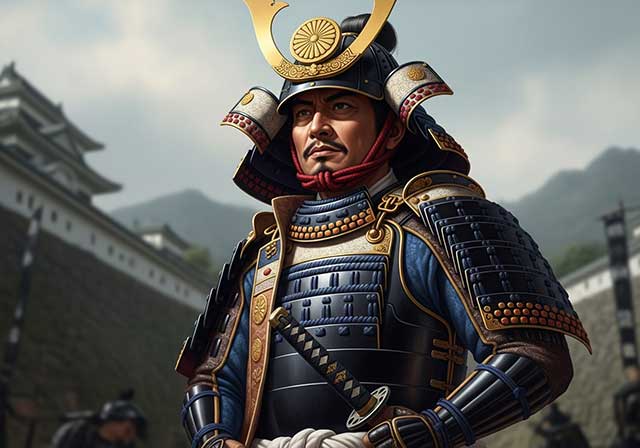
Hōjō Nagaudji was one of the prominent military commanders of the late Muromachi period. Thanks to a successful marriage alliance and skillful use of political intrigue, he managed to concentrate full power over the provinces of Suruga, Izu, and Sagami in his own hands. His origins remain unclear, but there is a possibility that he was connected to the Heiji clan of Ise Province, since early in his life he bore the name Ise Shinkurō.
-
Hirano Nagayasu
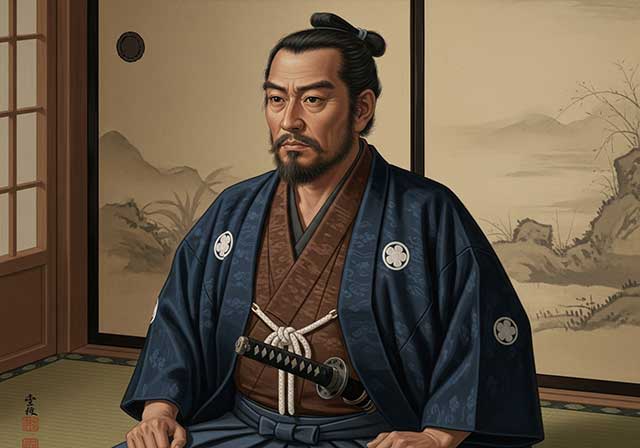
From an early age, Hirano Nagayasu was in the service of Toyotomi Hideyoshi, since Nagayasu’s father, Nagaharu, had faithfully served Hideyoshi during Hideyoshi’s own childhood. Thus, the connection between the Hirano family and the Toyotomi house was established long before Hideyoshi’s rise to power and took the form of hereditary vassal loyalty.
-
Hattori Hanzo
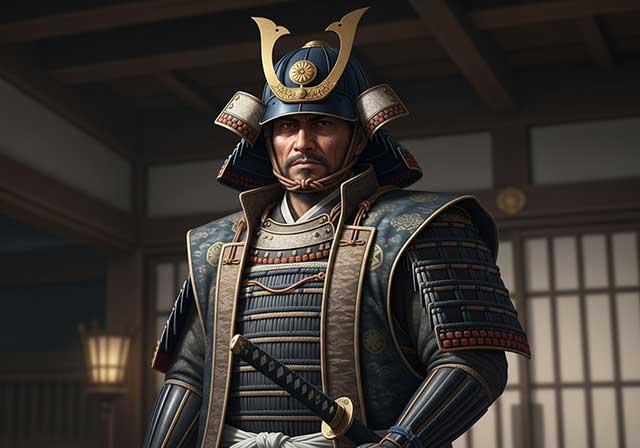
Hattori Hanzō, also known by the name Hattori Masanari, was the third son of Hattori Yasunaga, a samurai who served the Matsudaira clan. In his childhood he was called Tigachi Hanzō. His father held the highest rank in the shinobi hierarchy, that of jōnin, and Hanzō followed in his father’s footsteps, choosing the same path.
-
Hatano Hideharu
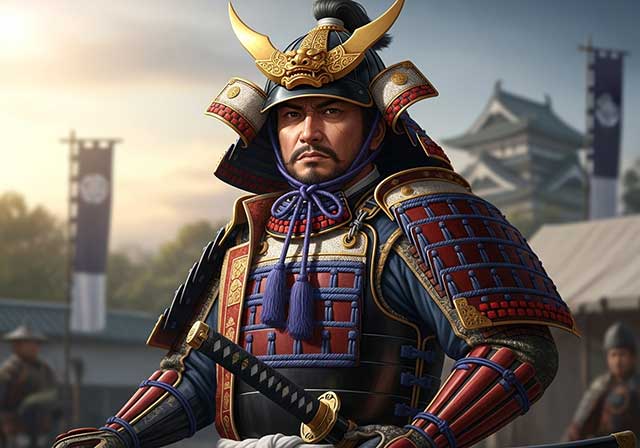
Hatano Hideharu was the eldest son of Hatano Harumichi, the head of the Hatano clan. However, in childhood he was adopted by his uncle, Hatano Motohide, and was therefore formally regarded as Motohide’s heir. From the time of Hideharu’s grandfather, Hatano Tanemichi, the Hatano clan had been a vassal of the powerful Miyoshi house, which exerted considerable influence over the Ashikaga shoguns and effectively shaped the political situation in the region. Early in his career, Hideharu served Miyoshi Nagayoshi and, judging by surviving records, held a fairly high position within his lord’s hierarchy, as he was among the select group invited to the enthronement ceremony of Emperor Ōgimachi in 1557.
-
Fukushima Masanori

Fukushima Masanori, a samurai from Owari Province, served Toyotomi Hideyoshi and took part in the Battle of Shizugatake, where he distinguished himself so conspicuously that he was awarded the honorary title of one of the “Seven Spears of Shizugatake,” meaning the warriors who had shown the greatest valor in the battle. As a reward for his courage and martial prowess, he was granted land producing an income of 5,000 koku of rice.
-
Uemura Masakatsu

Masakatsu was a member of the Uemura clan and the son of Uemura Masatada; from an early age he served Tokugawa Ieyasu. During the Ikkō-ikki uprising in Mikawa Province in 1563, having converted from the Jōdo Shinshū Buddhist sect to the Jōdoshū sect, he took part in suppressing the rebels. After these events, Masakatsu was appointed a military governor and was granted land holdings. According to a number of sources, he was one of the so-called “Three Governors of Mikawa” (Mikawa sanbugyō), together with Amano Yasukage (1537–1613) and Koriki Kiyonaga (1530–1608).
-
Tomoe Gozen

Gozen is regarded as one of the few historically documented examples of true female warriors of feudal Japan, known as onna-musha or onna-bugeisha. Although Japanese history records countless women who at various times were forced to take up arms—for example, in defense of their castles—Tomoe Gozen was, without any doubt, a genuinely skilled and accomplished fighter. She was the wife of Kiso (Minamoto) Yoshinaka, although The Tale of the Heike describes her more as a female vassal. Yoshinaka rose in rebellion against the Taira clan and, in 1184, captured Kyoto after his victory at the Battle of Kurikawa. After the Taira were driven into the western provinces, Yoshinaka began insistently asserting that he alone was worthy of assuming leadership of the Minamoto clan and taking on the mantle of its head.
-
Tachibana Muneshige

Tachibana Muneshige was born the eldest son of Takahashi Shigetane, one of the principal retainers of the Ōtomo clan and commander of Iwaya Castle. In childhood, he bore the name Senkumamaru. His early years coincided with a period of intense military confrontation between the Ōtomo clan and other powerful warrior houses of Kyūshū—namely the Shimazu, Akizuki, and Ryūzōji clans.

